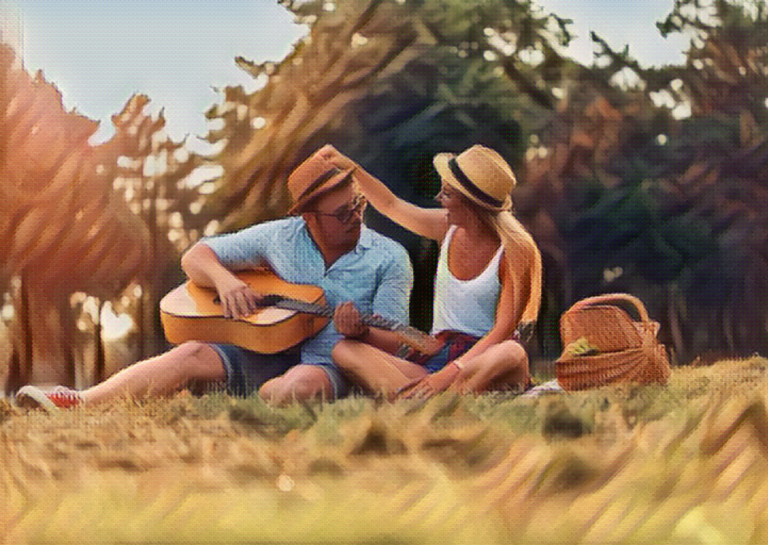In Safe People: How to Find Relationships that are Good for You and Avoid Those That Aren’t, Dr. Cloud and Dr. Townsend offer ways to tell if the people in your life are safe or unsafe and how you can improve your own unsafe characteristics for healthier and happier relationships.
Table of contents
What is an unsafe person?
The simple answer is that an unsafe person is someone that causes more harm than good in your life. So, that could look like a past romantic partner you used to date that broke your heart. Or someone who’s always overly critical. Suppose there’s a consistent pattern of being negatively affected by someone. In that case, it’s safe to say they’re probably an unsafe person in your life.
The impact of unsafe relationships on your health
Relational problems can make a huge difference in your overall health and well-being. So, it’s definitely worthwhile to evaluate if there are any overly negative people in your life.
I think that’s why Dr. Cloud and Dr. Townsend have written such a helpful book. It gives a more in-depth glimpse into why we should be paying attention to the people we have in our lives. Because that choice does impact so many aspects of our well-being.
Unsafe relationships can drain you mentally and spiritually, easily leading to physical illness. So, if you lack energy, are experiencing more headaches, or have backaches, it might be your social circle.
Characteristics of an unsafe person or connection
There are red flags you can pick up on that signal whether someone is safe or unsafe. Start by looking at whether there’s a good balance of giving and taking. Unsafe relationships tend to feel unbalanced, making them draining and highly damaging. Features like rarely admitting weaknesses, being defensive and resisting feedback, and not offering sincere apologies when they make a mistake, alongside a failure to make an actual change, also indicate someone who is considered unsafe. The authors even classify those people into three groups to help spot the difference.
Three groups of unsafe people
The first group is the abandoners. Those people stick around for the exciting beginnings of relationships but don’t see them through and don’t prioritize true and lasting connections. These relationships can leave you feeling anxious about future relationships and being manipulated.
The second group is the critics. While this group might have great analytical skills about situations and people that make them good a consultant when you have a problem, they’re often judgmental. They’re more motivated by judging what’s done wrong than by showing compassion or helping others.
The final group is made up of what the authors call the irresponsibles. You can’t count on these people to make or stick to a plan or promise. An example might be a friend you make dinner plans with who shows up 30 minutes late without an apology. While they may be fun and spontaneous, you can’t rely on or trust them. You’ll always doubt their reliability.
Recognizing your own unsafe behavior
We all have aspects of safe and unsafe behavior that can become a problem when connecting with others, even with our family. Past experiences and psychological hurt can lead anyone down a path of being unable to have true connections with others. The important thing is staying humble and honest with yourself about those characteristics. That will help identify if you’re going down a negative path.
The authors say four things are most destructive to safety: the emotion of envy, the idea you’re entirely self-sufficient, entitlement, and refusing to reach out to others, which the authors note is a vital law of God. Those four characteristics and attitudes can cut off the possibility of genuinely connecting with other people and being able to hold a safe space for others.
Staying closed off and protected by strict boundaries isn’t necessarily conducive to a fulfilling and safe life, even if it feels like the safest option after being hurt. The human experience isn’t meant to be done in isolation or loneliness. Community is an essential part of life you’ll regret not making a priority and can even lead to healing when done with safe people that offer emotional security.
Characteristics of safe people and how to become one
The bright side is that you do have control over the people you have in your life and the way you show up in relationships. The authors write about six tips that can cultivate safe connections as a product of our lives.
- The first method is asking for help. This helps with practicing humility and combats the dangerous attitude of self-sufficiency.
- The second is acknowledging your needs while remaining authentic to who you are. Communication is huge when staying open to safe relationships.
- The third is rebelling against yourself, which means identifying why you resist closeness in relationships and making the opposite choices.
- The fourth is asking for the truth from others. It might not be easy, but as the authors say, the truth can lead to love.
- The fifth tip is learning how to receive and extend forgiveness.
- And the final step is putting these things into practice by seeking places and people where you can create these safe relationships. It might sound scary, but there’s no need to worry. Now you know what safety looks like in a community.
Key takeaways
The key takeaway from this title is that being intentional with your relationships can lead to long-lasting fulfillment and happiness. And it starts with a review of your current relationships and behavior, taking steps to be a safe person, and cultivating connections with other safe people.

